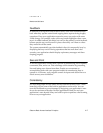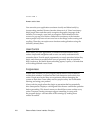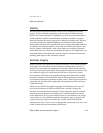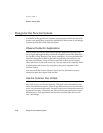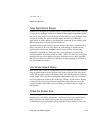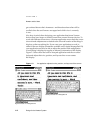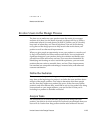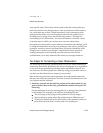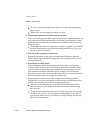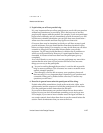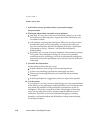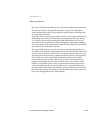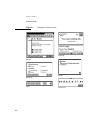
CHAPTER 1
Newton and Its Users
Involve Users in the Design Process 1-15
more specific tasks. These tasks can be based on the task analyses that you
performed earlier in the design process. After you determine which tasks to
use, write them out as short, simple instructions. Your instructions to the
participants should be clear and complete but should not explain how to
do things you’re trying to test. See the following section, “Ten Steps for
Conducting a User Observation,” for more information; it includes a series
of sample steps on which you can base your own user observation.
During the user observation, record what you learn about your design; you’ll
be using this information to revise your prototype. Once you’ve revised your
prototype, conduct a second user observation to test the workability of the
changes you’ve made to your design. Continue this iterative process of
creating prototypes and conducting user observations until you feel
confident that you’ve fully addressed the needs of your target audience.
Ten Steps for Conducting a User Observation 1
The following steps provide guidelines that you can use when conducting a
simple user observation. Remember, this test is not designed as an experiment,
so you will not get quantitative data that can be statistically analyzed. You
can, however, see where people have difficulty using your product, and you
can then use that information to improve your product.
Most of these steps include some explanatory text with sample statements
that you can read to the participant. Feel free to modify the statements to suit
your product and the situation.
1. Introduce yourself and describe the purpose of the observation (in very
general terms). Most of the time, you shouldn’t mention what you’ll be
observing.
Set the participant at ease by stressing that you’re trying to find problems
in the product. For example, you could say something like this:
“You’re helping us by trying out this product in its early stages.”
“We’re looking for places where the product may be difficult to use.”
“If you have trouble with some of the tasks, it’s the product’s fault, not
yours. Don’t feel bad; that’s exactly what we’re looking for.”



